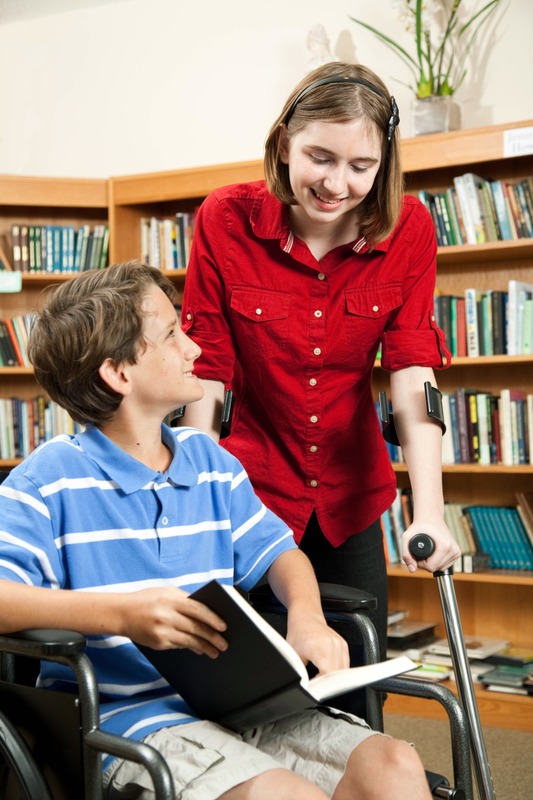Physical Disabilities
Physical Disabilities
Introduction to Physical Disabilities

Under the Americans with Disabilities Act (2014), a physical disability is defined as, "any physiological disorder or condition, cosmetic disfigurement, or anatomical loss affecting one or more of the following body systems: neurological, musculoskeletal, special sense organs, respiratory (including speech organs), cardiovascular, reproductive, digestive, genito urinary, hemic and lymphatic, skin, and endocrine" (United States Department of Justice, 2008). In order to comply with the Americans with Disabilities Act (ADA), librarians must make their buildings and resources available to individuals with physical disabilities. On a basic level, libraries must have elevators and ramps so that the Universal Design, which you will learn about in detail in Module 3, places emphasis on creating spaces that anticipate the needs of individuals with disabilities.
Accommodations in the Library
Considerations that should be made in libraries for individuals with disabilities include making sure that counters are not too high, that aisles are wide enough, and that materials are easy to access. Wheelchair accessible computer stations can also assist students with physical disabilities. Librarians should be familiar with the assistive technology that is offered at the library. Signage that indicates the location of resources to students with disabilities should be visible. Printed material should be available that describes the library's services and resources. In addition to signage and printed material, librarians can establish the availability of resources and services on the library's web site.
Staff should be available to assist students when resources and materials are not easily accessible. For example, some materials such as books, magazines, and journals may be difficult to access. Working directly with the individual needs of each student is important because of the variety and uniqueness of each student and the specificity of the physical disability. Librarians should work with each student and try to create individualized solutions. The cultivation of a positive and knowledgeable library staff is essential in order to provide students with physical disabilities with optimal experiences. The library should make it clear that it is a place that is friendly toward students with physical disabilities.
References
United States Department of Justice. (2008). ADA best practices toolkit for state and local governments. Retrieved from http://www.ada.gov/pcatoolkit/chap1toolkit.htm
